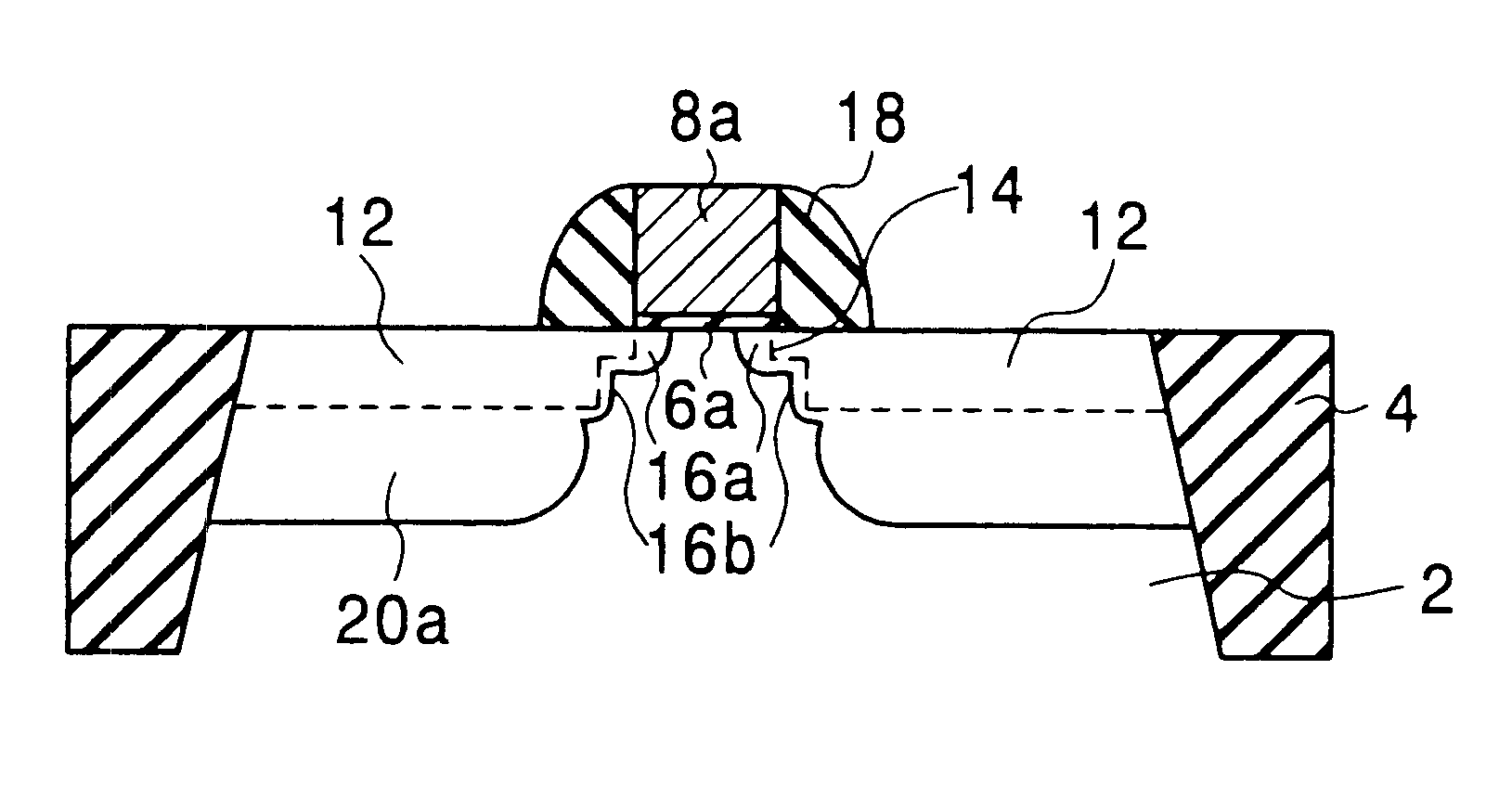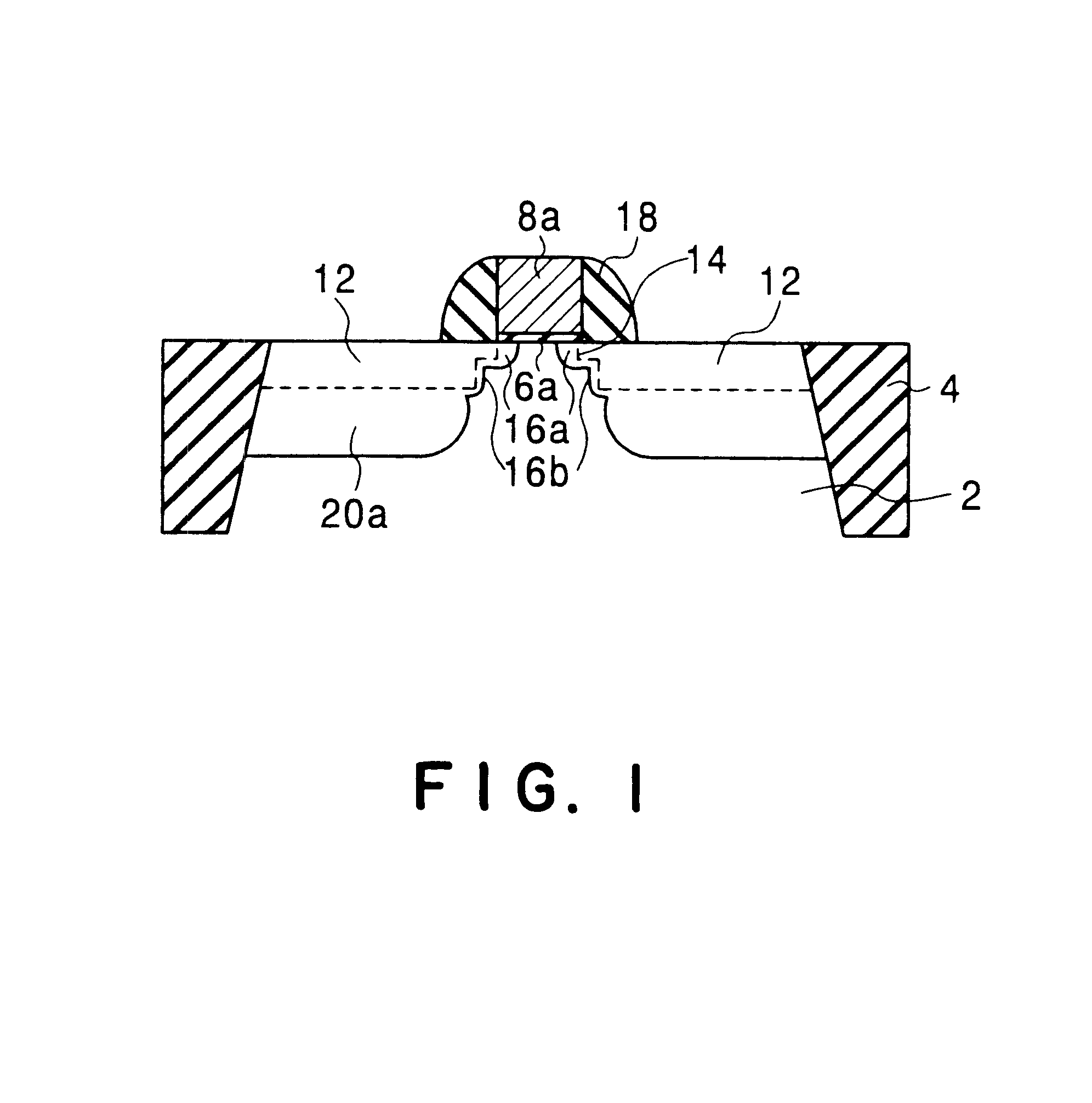Semiconductor device having diffusion regions with different junction depths
a technology of diffusion region and junction depth, applied in the field of semiconductor devices, can solve problems such as degrading the capability of driving curren
- Summary
- Abstract
- Description
- Claims
- Application Information
AI Technical Summary
Benefits of technology
Problems solved by technology
Method used
Image
Examples
first embodiment
(First Embodiment)
FIG. 1 shows the structure of a semiconductor device according to a first embodiment of the present invention. The semiconductor device of this embodiment includes a p-channel MOSFET having a gate insulating layer 6a formed on an n-type silicon semiconductor region 2 isolated by device isolating regions 4, a gate electrode 8a formed on the gate insulating layer 6a, a channel region formed immediately below the gate electrode 8a in the semiconductor region 2, source / drain regions 20a formed at both the sides of the channel region in the semiconductor region 2, diffusion layer regions (extension regions) 16a and 16b formed between the channel region and the source / drain regions 20a and having a lower p-type impurity (e.g., boron) concentration than the source / drain regions 20a, impurity regions 12 and 14 containing germanium as impurity, and a gate sidewall 18 of an insulating material formed at the side portion of the gate electrode 8a.
The impurity regions 12 are fo...
second embodiment
(Second Embodiment)
Next, a method of manufacturing a semiconductor device according to a second embodiment of the present invention will be described with reference to FIGS. 2 and 3. The method of this embodiment is for manufacturing the semiconductor device shown in FIG. 1.
First, as shown in FIG. 2(a), the n-type silicon semiconductor region 2, which is isolated by the device isolation regions 4, is formed on the substrate. Then, as shown in FIG. 2(b), an insulating layer 6 is formed on the surface of the semiconductor region 2, and as shown in FIG. 2(c), a polycrystalline silicon layer 8 is grown on the insulating layer 6. Subsequently, the polycrystalline silicon layer 8 and the insulating layer 6 are pattered by the use of the photolithography technique, RIE (Reactive Ion Etching) technique, etc., to form the polycrystalline silicon gate electrode 8a and the gate insulating layer 6a, as shown in FIG. 2(d). Thereafter, as shown in FIG. 2(e), a gate sidewall 10 is formed at the si...
PUM
 Login to View More
Login to View More Abstract
Description
Claims
Application Information
 Login to View More
Login to View More - R&D
- Intellectual Property
- Life Sciences
- Materials
- Tech Scout
- Unparalleled Data Quality
- Higher Quality Content
- 60% Fewer Hallucinations
Browse by: Latest US Patents, China's latest patents, Technical Efficacy Thesaurus, Application Domain, Technology Topic, Popular Technical Reports.
© 2025 PatSnap. All rights reserved.Legal|Privacy policy|Modern Slavery Act Transparency Statement|Sitemap|About US| Contact US: help@patsnap.com



